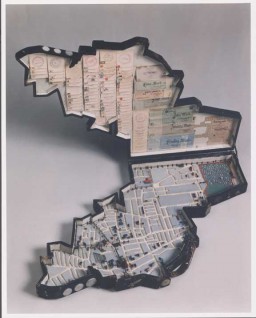
Artifact
Browse an alphabetical list of artifacts from the Holocaust and World War II. Each object tells a story about the history and demonstrates human experiences during the time period.
<< Previous | Displaying results 1-15 of 15 for "Artifact" | Next >>
-
Map of Kobe, Japan, from tourist guide to Kobe
ArtifactThe Kobe Municipal Office issued an English-language tourist guide to Kobe and its environs. The tourist map of Kobe pictured here was included with the guide. Jewish refugees in Kobe used such pieces of information. Kobe, Japan, 1940-1941. [From the USHMM special exhibition Flight and Rescue.]
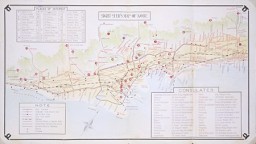
-
Map titled "Jewish Executions Carried Out by Einsatzgruppen A"
ArtifactThis map accompanied a secret undated German report on the mass murder of Jews by Einsatzgruppen A (mobile killing unit A). During the International Military Tribunal at Nuremberg, the map was introduced as evidence by both the American and British prosecution teams. The document, entitled "Jewish Executions Carried Out by Einsatzgruppen A" and stamped "Secret Reich Matter," shows the number of Jews executed (symbolized by coffins) in the Baltic states and Belorussia by late 1941. The legend near the…

-
Map used as trial evidence
ArtifactThis map of the Treblinka I forced-labor camp was drawn by Holocaust survivor Manfred Kort in 1946. In 1990 Kort donated the map to the United States Holocaust Memorial Musem. In March 1997, at the request of the Office of Special Investigations, the Museum sent the original drawing to Chicago to be used as evidence at the trial of one Bronislaw Hajda. At the conclusion of Hajda's trial on April 10, 1997, the U.S. Department of Justice announced that "a federal judge in Chicago has revoked the naturalized…
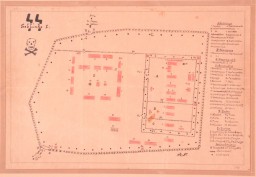
-
Matchbox cover with Japanese propaganda illustration
ArtifactDuring the war the Japanese flooded Shanghai with anti-American and anti-British propaganda, including this image from a matchbox cover. It depicts a Japanese plane dropping a bomb on the U.S. and British flags. Shanghai, China, between 1943 and 1945. [From the USHMM special exhibition Flight and Rescue.]
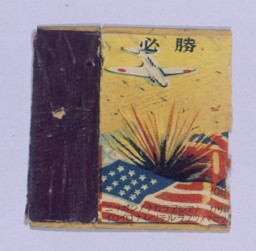
-
Matchbox cover with Japanese propaganda illustration
ArtifactDuring the war the Japanese flooded Shanghai with anti-American and anti-British propaganda, including this image from a matchbox cover. It depicts Japanese planes flying in formation over the U.S. and British flags, with the Japanese flag rising in triumph. Shanghai, China, between 1943 and 1945. [From the USHMM special exhibition Flight and Rescue.]
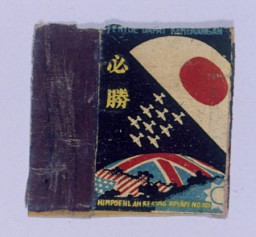
-
Matchbox cover with Japanese propaganda illustration
ArtifactDuring the war the Japanese flooded Shanghai with anti-American and anti-British propaganda, including this image from a matchbox cover. It depicts a Japanese tank rolling over the U.S. and British flags. Shanghai, China, between 1943 and 1945. [From the USHMM special exhibition Flight and Rescue.]
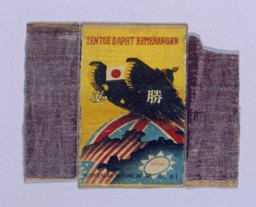
-
Matchbox cover with Japanese propaganda illustration
ArtifactDuring the war the Japanese flooded Shanghai with anti-American and anti-British propaganda, including this image from a matchbox cover. It depicts United States President Franklin D. Roosevelt--dressed in rags, on a raft in the ocean, and holding onto the U.S. flag--in the view of a Japanese submarine periscope. Shanghai, China, between 1943 and 1945. [From the USHMM special exhibition Flight and Rescue.]

-
Matchbox cover with Japanese propaganda illustration
ArtifactDuring the war the Japanese flooded Shanghai with anti-American and anti-British propaganda, including this image from a matchbox cover. It depicts a Japanese bomb landing in the United States heartland and knocking the stars off the U.S. flag. Shanghai, China, between 1943 and 1945. [From the USHMM special exhibition Flight and Rescue.]
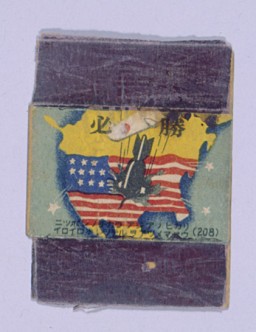
-
Medical chain of command in the Third Reich
ArtifactA diagram showing the medical chain of command in the Third Reich, drawn up as evidence for the Doctors Trial. Nuremberg, Germany, December 1946.
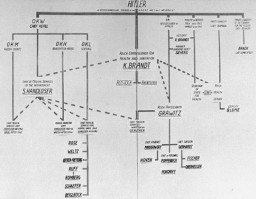
-
Metal box that held contents of the Oneg Shabbat archive
ArtifactOne of the ten metal boxes in which portions of the Oneg Shabbat archive were hidden and buried in the Warsaw ghetto. The boxes are currently in the possession of the Jewish Historical Institute in Warsaw. This view is of an open box without the lid.
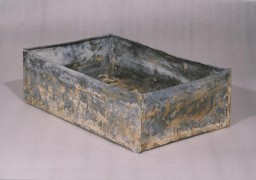
-
Metal box used to hide contents of the Oneg Shabbat archives
ArtifactOne of the ten metal boxes in which portions of the Ringelblum Oneg Shabbat archives were hidden and buried in the Warsaw ghetto. The boxes are currently in the possession of the Jewish Historical Institute in Warsaw.

-
Milk can that held part of the Oneg Shabbat archive
ArtifactOne of the two milk cans in which portions of the Ringelblum Oneg Shabbat archives were hidden and buried in the Warsaw ghetto. The milk cans are currently in the possession of the Jewish Historical Institute in Warsaw.

-
Milk can used to store content of the Oneg Shabbat archives
ArtifactOne of the milk cans used by Warsaw ghetto historian Emanuel Ringelblum to store and preserve the secret "Oneg Shabbat" ghetto archives.This milk can, identified as no. 2, was unearthed at 58 Nowolipki Street in Warsaw on December 1, 1950.
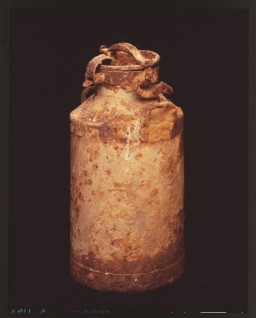
-
Mishneh Torah
ArtifactA page from the Mishneh Torah, one of many texts reprinted in Shanghai during the war. Yeshiva students spent part of each day listening to teachers lecture on the Talmud, the collection of ancient Rabbinic writings and commentaries composed of the Mishnah and the Gemara that form the basis of religious authority in Judaism. During the rest of the day, students paired up to review selections from the lecture. [From the USHMM special exhibition Flight and Rescue.]

-
Model of the Lodz ghetto
ArtifactLeon Jakubowicz, a shoemaker by training and a native of Lodz, began constructing this model of the Lodz ghetto soon after his arrival there from a prisoner-of-war camp in April 1940. The case holds a scale (1:5000) model of the ghetto, including streets, painted houses, bridges, churches, synagogue ruins, factories, cemeteries, and barbed wire around the ghetto edges. The model pieces are made from scrap wood. The case cover interior is lined with a collection of official seals, a ration card, and paper…
